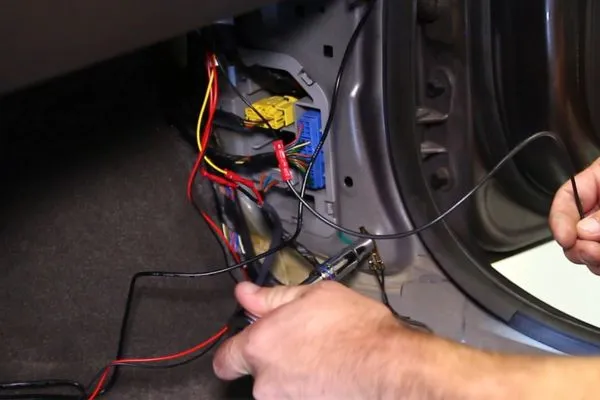Setting up your camper for the first time can be a daunting task. One of the most important steps you must take is to ensure that your camper is properly grounded. This will help protect you and your family from electrical shocks and possible fire hazards. To help make sure you do it correctly, here’s a step-by-step guide to how to ground my camper.
To ground your camper, drive a grounding rod into the earth near the camper’s electrical connection point. Connect a copper wire from the rod to the camper’s grounding lug or chassis to ensure electrical safety.
Should You Ground A Camper?
If you’re new to camping, you may have heard the term “grounding” thrown around, but what does it mean? And is it something you should do for your camper? First, we will cover the basics of grounding and why you should consider it for your camper.
What Does Grounding Mean?
Grounding a camper means connecting the metal parts of your RV to the ground to prevent shocks and other electrical dangers. This is done by running a copper wire from the frame of your camper down into the ground with a grounding rod.
This helps reduce the chances of electric shock or any other hazardous electrical incident. It also prevents any sparks if there is an issue with wiring or other components in your RV.
Why Should You Ground Your Camper?
Before taking your camper out on the open road, you should ground it. Grounding a camper allows for stable electrical power, minimizes damage from lightning strikes and other extreme weather, and can help protect the electronic systems of your RV from shorts and surges.
Doing this is fairly simple; most campers have a grounding lug connected to a suitable ground source, like a cold water pipe nearby. Many local auto hobby shops offer inexpensive ground-scheduling kits to ensure your camper is properly grounded before you venture off on your next adventure.
Also Read: How to Convert a Van in to an Off-Grid Camper?
What Else Do I Need To Know?
When grounding your camper, use good quality copper wire so that it won’t deteriorate over time due to corrosion or weather changes. Once installed, regularly check on the connection between the rod and frame and inspect for any signs of corrosion or damage.
Before making any modifications to your RV’s electrical system, always consult with an expert so they can advise you on the best course of action for safety reasons.
Also Read: Can You Live In A Camper In The Winter?
How To Ground My Camper | Step By Step Procedure

Step 1: Gather Supplies
The supplies you need to ground your camper are fairly simple. You’ll want to gather a ground rod, an 8-gauge wire, two flat washers, two-star washers, two lock washers, and a lug connector. You won’t need any special tools; make sure you have a hammer or mallet handy.
Step 2: Install the Ground Rod
Once you have your supplies ready to go, it’s time to get started! Start by driving the ground rod into the soil near the edge of your campsite using a hammer or mallet. Make sure it is firmly in place before moving on.
Step 3: Attach Wire To Ground Rod
Next, attach one end of the 8-gauge wire to the ground rod with a lug connector and then wrap it around it three times. Secure this connection with one flat washer, star washer, and lock washer.
Then repeat on the other end of the wire with another lug connector and secure with another set of flat/star/lock washers.
Step 4: Connect Ground Wire To Camper Frame
Now that both ends of the wire are securely attached to the ground rod and each other, it’s time to attach them to your camper frame.
Start by attaching one wire end directly to the metal frame using another lug connector and secure as before with a flat/star/lock washers combination.
Make sure this connection is tight, so there are no gaps or loose connections near the metal frame where electricity could come in contact with people or objects inside the camper trailer.
Before attaching the second end of the wire similarly at a different point on the metal frame as close as possible to where the first end is connected, create a complete circuit for the grounding process when electricity flows through the trailer’s outlets, lights turn on, etc.
Finally, double-check both connections again, making sure they’re tight without gaps between them and the metal frame so electricity can’t escape anywhere else while running through the circuit created when connecting both ends.
Congratulations! You’ve now successfully grounded your camper trailer – enjoy camping safely!
Also Read: How To Turn Your Car Into a Camper?
Bottom Line:
Now you know how to ground my camper? Grounding your camper trailer is essential to stay safe while camping in nature’s great outdoors! By following these steps carefully and checking all connections twice, you can ensure that you camp without worrying, knowing that everything is secured properly—and safely—for years to come! So grab those supplies, get outside, and start some campfire stories around the glowing embers! Have fun!



